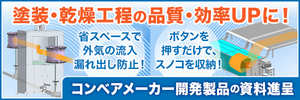1~19 item / All 19 items
Displayed results
Filter by category

Bioengineering
We have been involved in various fermentation and culture equipment, including animal and plant cell culture devices, and virus culture devices, accumulating know-how in the process. We are also engaged in research and development of bioreactors for immobilized enzymes and microorganisms, with numerous delivery achievements. Additionally, we are conducting research and development of high-performance bioreactors.























